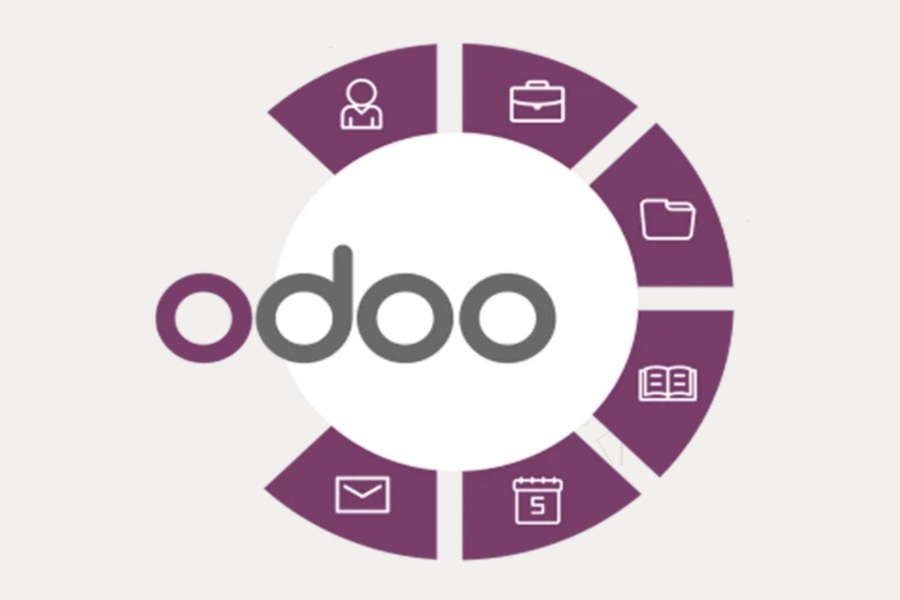Odoo is a versatile and modular ERP (Enterprise Resource Planning) system designed to cater to the needs of both small startup companies and large multinational corporations. Its flexibility, extensive range of business applications, and ability to scale make it a popular choice across various industries. For an IT solutions company Dubai, Odoo’s adaptability can streamline operations and drive growth. This detailed article delves into the features, modules, history, and advantages of Odoo ERP.
Odoo ERP Modules
1. Production
– Maintenance: Ensures the smooth operation of production machinery with scheduled maintenance tasks. The module helps in preventing unexpected downtimes and prolongs the lifespan of equipment.
– Quality Control: Monitors and manages the quality of products through various stages of production. It includes features for defining quality checks, managing quality control plans, and ensuring compliance with industry standards.
– Product Life Cycle Management (PLM): Oversees the entire lifecycle of a product, from initial design to production and disposal. It facilitates the management of engineering changes, versioning, and collaboration among stakeholders.
2. Project Management
– Task Creation: Facilitates the creation of tasks and assigning them to team members. It supports task dependencies, milestones, and deadlines to ensure project coherence.
– Planning and Forecasting Deadlines: Helps in planning project timelines and predicting completion dates. It includes Gantt charts, calendar views, and timeline management tools.
– Performance Analysis: Provides tools to analyze employee performance and project progress. It offers insights into task completion rates, time spent, and resource utilization.
3. Financial Accounting
– Invoicing: Automates the process of generating and sending invoices. It integrates with sales and purchase modules to streamline billing.
– Payment Processing: Manages the receipt of payments and tracks account movements. It supports multiple payment methods and reconciliation processes.
– KPI Reporting: Generates reports on key performance indicators (KPIs) to assist managers in decision-making. It includes financial dashboards, profit and loss statements, and balance sheets.
4. Warehouse, Inventory, and Procurement Management
– Inventory Tracking: Keeps accurate records of goods in stock. It supports real-time inventory updates, stock movements, and warehouse transfers.
– Supplier Requests: Automates sending procurement requests to suppliers based on inventory levels. It includes purchase order management, supplier performance evaluation, and procurement analytics.
5. HR Management
– Recruitment: Manages job postings and candidate applications. It supports the entire recruitment process, from job posting to onboarding.
– Attendance and Work Hours: Tracks employee attendance and hours worked. It integrates with payroll to ensure accurate salary calculations.
– Payroll Management: Handles employee payments and expenses. It includes salary structure configuration, payslip generation, and expense claim management.
– Leave Requests: Manages employee leave applications. It supports leave policies, approval workflows, and leave balance tracking.
6. Document Management
– Document Exchange and Management: Facilitates the sharing, management, classification, and archiving of documents. It supports version control, access rights, and collaborative editing.
– Batch Processing and Electronic Signatures: Supports batch document processing and electronic signature integration. It ensures compliance with legal and regulatory requirements.
7. Point of Sale (POS)
– Flexible Settings: Customizes the POS interface to suit business needs. It supports various payment methods, customer loyalty programs, and promotional campaigns.
– Intelligent Interface: Ensures ease of use and efficiency in sales transactions. It integrates with inventory and accounting modules for seamless operations.

Odoo Versions
Odoo offers two main versions:
– Odoo Community: A free version with essential features. It is suitable for small businesses and startups that need basic ERP functionalities.
– Odoo Enterprise: A paid version with additional features and official support. It includes advanced modules, performance optimizations, and access to Odoo’s cloud infrastructure.
Key Features of Odoo
Architecture
Odoo’s extensible architecture allows developers and organizations to create and share custom applications or modules on the Odoo marketplace. These can be offered for sale or free download, providing a rich ecosystem of tools and functionalities. This open-source approach fosters innovation and collaboration within the Odoo community.
Advantages
– Cost-Effective: Low installation costs, with the community version often being completely free. Even the enterprise version is competitively priced compared to other ERP solutions.
– Community Support: Strong support from a global community of developers. This includes forums, documentation, and community-driven enhancements.
– Open Source: Availability of source codes allows customization to meet specific business needs. Businesses can tailor the software to their unique processes and requirements.
Areas of Application
Odoo’s comprehensive suite of applications covers:
– CRM: Customer Relationship Management, which helps in managing customer interactions, sales pipelines, and customer support.
– Sales and Purchases: Manages the sales and purchase processes, from order creation to fulfillment and invoicing.
– Warehouse and Inventory Management: Controls stock levels, warehouse operations, and logistics.
– Production: Oversees manufacturing processes, including work orders, bill of materials, and production planning.
– HR Management: Manages employee data, recruitment, payroll, and performance evaluations.
– Accounting: Automates financial operations, including accounts payable, accounts receivable, and financial reporting.
– Document Management: Facilitates document sharing, storage, and compliance.
– Corporate Portal Management: Provides tools for managing internal and external portals, including websites and customer portals.
Use Cases
Odoo is adaptable for both on-premises installations and turnkey SaaS (Software as a Service) environments, catering to diverse operational preferences. This flexibility allows businesses to choose the deployment model that best fits their infrastructure and strategic goals.
Additional Features
– Reporting and Analytics: Built-in tools for generating custom reports and visualizing data through interactive dashboards. It includes pivot tables, graphs, and charts to provide actionable insights.
– Strategic Planning: Supports data-driven decision-making to enhance strategic planning and business operations. It includes forecasting tools, budgeting, and scenario analysis.
History of Odoo
– 2005: Fabian Pinckaers started developing TinyERP, laying the foundation for what would become Odoo.
– 2008: The system was rebranded as OpenERP, reflecting its open-source nature and growing capabilities.
– 2010: The company grew to over 100 employees, offering OpenERP services to a global clientele.
– 2013: Recognized by Deloitte as the fastest-growing company in Belgium, with a growth rate of 1,549% over five years. This marked a significant milestone in the company’s journey.
– 2014: Renamed to Odoo to differentiate itself from the term “ERP” and highlight its comprehensive suite of applications beyond traditional ERP functionalities.
– 2015: Listed in Inc. magazine’s top 5000 fastest-growing private companies in Europe, showcasing its rapid expansion and market acceptance.
– 2019: Secured $90 million in investments, fueling further development and global reach.
– 2021: Surpassed 5 million users, reflecting its widespread adoption and versatility.

Current Status
Today, Odoo ERP includes 46 modules and over 17,000 applications, with approximately 12 million users worldwide. Over 800 partner companies in 120 countries are involved in distributing and implementing the system. Odoo’s global presence and extensive partner network ensure robust support and localized expertise.
Conclusion
Odoo ERP stands out as a robust and scalable solution for businesses of all sizes. Its modular design, extensive features, and strong community support make it an ideal choice for companies seeking to enhance efficiency, improve operational visibility, and drive business growth. Whether used on-premises or as a SaaS solution, Odoo offers the flexibility and functionality needed to meet diverse business requirements. By leveraging Odoo’s comprehensive suite of applications, businesses can streamline their operations, improve decision-making, and achieve sustainable growth.

I am a Junior Web Developer for Oswald Technologies. I am an accomplished coder and programmer, and I enjoy using my skills to contribute to the exciting technological advances that happen every day at Oswald Tech.